A lot of people probably thought this would never happen but today I found myself riding a Royal Enfield Interceptor 650. It’s a motorcycle that I’ve warned riders to be cautious of in the past.
So now that I’ve had a chance to test ride an Interceptor 650, has my mind changed, and more importantly, should you buy a Royal Enfield Interceptor 650?


Why don’t people trust Royal Enfield’s reliability?
Royal Enfield has a spotty reputation when it comes to reliability. Moreover, they have a history of telling riders that their motorcycles are as reliable as the Japanese competition. We end up in a case of the little boy who cried wolf, or the dumped lover who promises they’ll change: Royal Enfield has lied about their quality so many times that it’s hard to trust them.
But if Royal Enfield sells millions of motorcycles domestically, doesn’t that mean they make a quality vehicle?
Product volume and quality are not directly correlated. If they were, a Honda Civic would be a better car than anything Lamborghini or Ferrari have ever made. Royal Enfield sells millions of motorcycles in India, this is true. But we need to remember that in India the average middle class annual income is about what a North American college student will make in a few months at a job over the summer.
We can’t expect the average Indian consumer to have the same standards as North Americans, when the average Indian income is a very small fraction of what we make here.
If you’d like to learn more about Royal Enfield’s issues in previous generations that they told consumers were “as good as the Japanese”, see my article and video titled Royal Enfield Reliability – Or Lack Of.
What makes a good motorcycle in 2022?
Anyone can build a motorcycle that works well when it’s new. That’s not the mark of a good motorcycle. A good motorcycle isn’t a motorcycle that works well when new. A good motorcycle is a motorcycle that is still as good as new even when it’s five years old.
The question is how well will the motorcycle hold up? Do the plastic connectors start to wear away? Was the wiring used too low great and will be prone to corrosion in the future? How well will the paint, chrome, and clear coat hold up? How do all of the different components still function and feel?
It’s impossible to say whether or not a new motorcycle will be a good motorcycle down the road, and unfortunately, this won’t be a five year test ride, so I won’t be able to tell you how the Royal Enfield holds up. But I’ll tell you what I can.
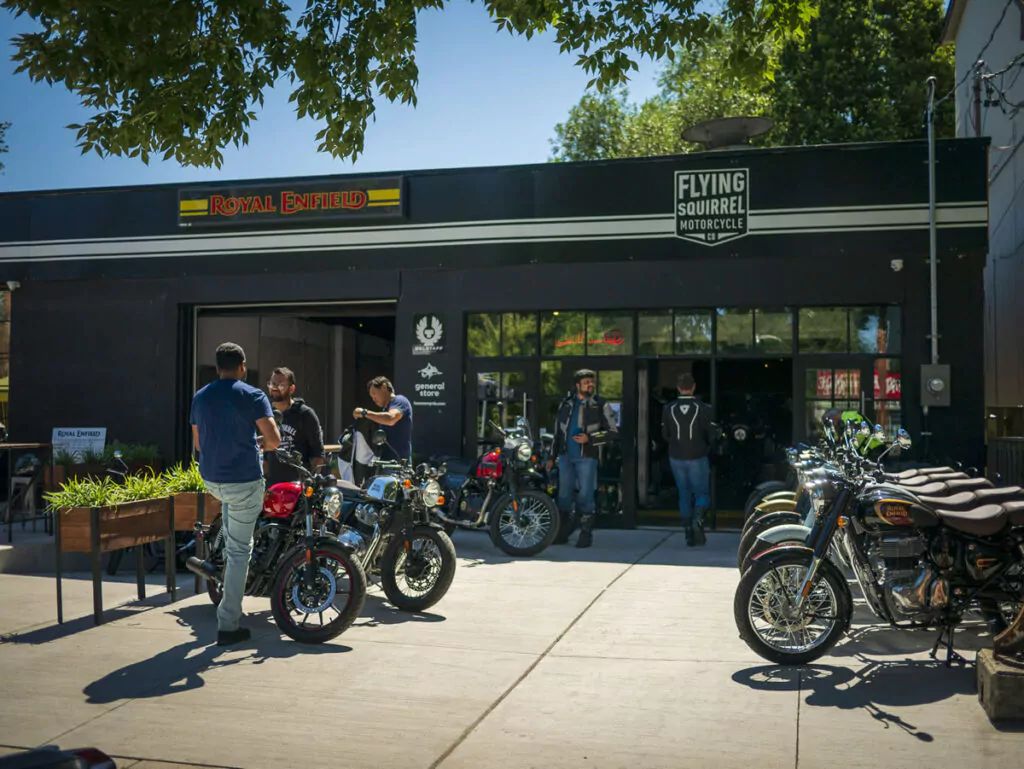
So is it smooth?
Let’s start with what the Royal Enfield Interceptor 650 is very good at: smooth shifting and overall calm and quiet demeaner. For perspective I rode a BMW G650GS with a 650cc single motor before jumping onto the Royal Enfield. The Enfield shifted just as smoothly but the engine produced far less vibration.
At idle the Interceptor 650 is quiet. As I start riding it I’m not getting any immediate red flags. I find the gas-charged shocks provide good suspension for inner city riding. Overall this is a comfortable ride through town. The motorcycle moves just fine when you pull away from a stop. The throttle isn’t twitchy or abrupt.
You may want to see where the friction point is on the clutch to make sure that it works for you. The clutch engagement just happens at the end of the clutch lever’s throw on this motorcycle, making for an awkward point of engagement into the friction zone. I’m not sure if this was by design or just a matter of my clutch lever being set for someone with giant hands.
Besides a dodgy friction point, the real issue with an otherwise very smooth motorcycle, is that over 5,000 rpms the motor gives the rider a lot of vibration. Granted, I have not had a chance to test this in higher gears on the highway, or to see what it’s like to make the most of sixth gear. I will be taking one for an extended test ride in the future and update this review after that. My expectations however were that a motorcycle that makes it’s peak horsepower over 7,000 rpm would be a little less harsh around 5,000 rpm.
Once you’ve adjusted to the far out friction point, you’ll find shifting gears both up and down to be buttery smooth.
What are the tire sizes?
The front tire is 100/90-18, and the rear is a 130/70-18. An 18″ tire size isn’t as widely popular as a 17″ or 19″, but it allows for a nice compromise.
In comparison with Triumph, the 18″ front 100/90-18 is the same size as Triumph’s Street Twin, which is appreciably smaller than the Triumph T100’s 100/90-19 and will help the Interceptor’s handling. In my opinion, neither one of these setups are as good as the old, discontinued Triumph Bonneville SE. The Bonneville SE boasted a 110/70-R17 on the front, and a 130/80-R17 on the rear. The smaller tires made for a noticeable improvement in tight handling and corner carving.
For a relaxed rider on a very chill machine, the Interceptor’s setup will be fine. However it’s surprising to see that Royal Enfield kept the 100/90-18 front and 130/70-18 rear on the Continental GT, the sportier sibling of Royal Enfield’s two 650 twins.
Will the Royal Enfield Interceptor 650 wear or rust prematurely?
Before jumping on for a test ride I was looking at the Royal Enfield Interceptor 650 and looking for any causes of concerned. I’ve heard some complaint of premature rusting, but without knowing the circumstances it’s difficult to know if the fault lied with the motorcycle or the owner.
At first glance I saw nothing out of sorts, except for some kind of dust left over from fabrication. At first I thought it was an early sign of pitting, but it seems to just have been fabrication dust that was never cleared off before the bikes were shipped off, assembled by the dealer, or offered up as a demo unit. One would have thought somewhere along the lines Royal Enfield might have cleaned the bike before handing it over to prospective buyers. Interesting.
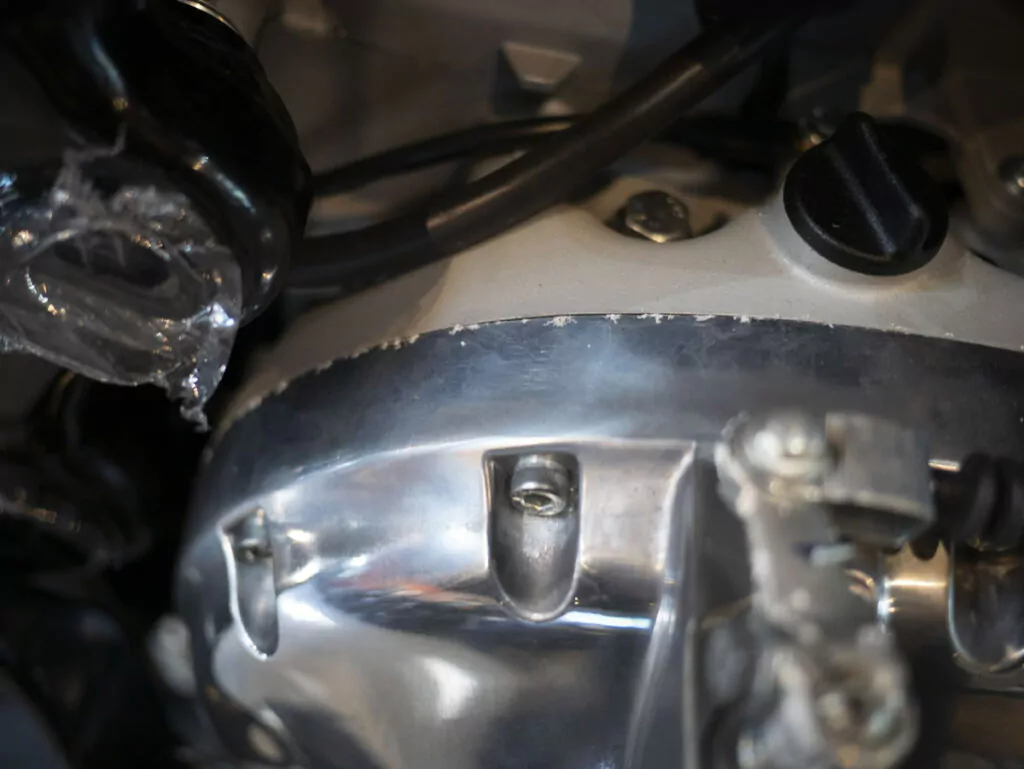
How are the brakes on the Royal Enfield Interceptor 650?
The Royal Enfield Interceptor has a 320mm single disk front brake and 240mm rear disk brake. The two piston front caliper and the single piston rear caliper are made by ByBre. ByBre stands for By Brembo, and is an Indian subsidiary of Brembo.
There was a recall on the front ByBre caliper. If you’ve already purchased a Royal Enfield, you should call up your dealership with your VIN#, they may replace yours for free.
Some riders have reported appreciated the ABS braking system made by a reputable brand. Another test ride attendee told me that he loved his Royal Enfield 650cc motorcycle but needed to have his front rotor replaced under warranty in the first 11,000 km because it had warped.
Other, more picky riders, will point out that the rotors are some of the ugliest braking components you’ve ever seen.
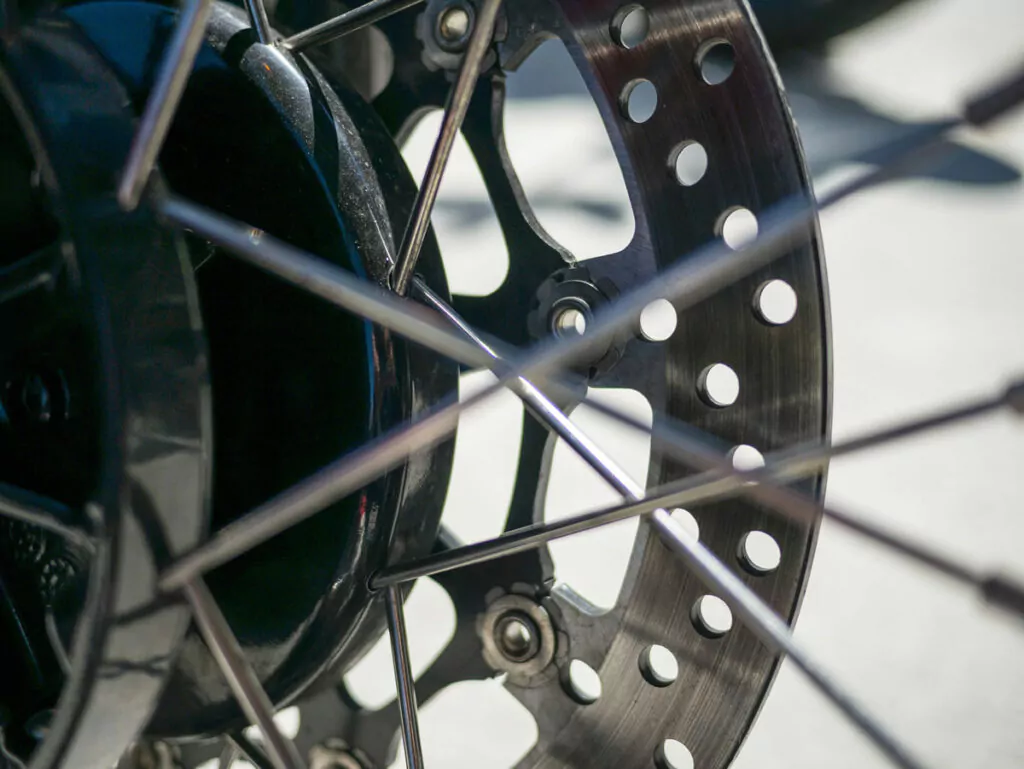
What is the aftermarket like for the Royal Enfield?
There are a lot of aftermarket parts for the Royal Enfield. The range may not be of the same caliber of breadth, depth, and quality, of that of Triumph’s Bonneville family, but likely still exceeds the aftermarket support (or challenges) that Moto Guzzi V7 owners face.
Luckily for Royal Enfield owners, big manufacturers that produce quality components are getting on board. Chief among them is S&S, which typically produces aftermarket performance goodies for Harley-Davidson motorcycles. S&S makes a kit to bump your Royal Enfield 650 up to an 865cc – the exact same displacement size as my Bonneville, interesting. The kit is $800 and will cost many hours of labor on top of that, but if you’d like to have at least as much displacement as a pre-2016 Triumph, this could be the upgrade for you, and it comes from a very reputable brand.
Should you buy a new Royal Enfield, or a used Triumph?
Many people gravitate to the Royal Enfield Interceptor 650 because of its relatively low cost, but used Triumph Bonnevilles can be even cheaper than new Royal Enfields, so which one should you buy?
I recently purchased a used fuel injected Triumph Bonneville SE with only 6,000 km (3,800 miles) for less than half the price of a brand new Royal Enfield Interceptor. It will need a brand new set of tires and an oil change, but besides that, it is mechanically as good as new. The Bonneville comes with absolutely no warranty other than a reputation for being a bullet proof reliable motorcycle. It also has a better finish, is just as smooth, handles better (it’s the SE model with the 17″ tires), and comes with better aftermarket support.
Editor’s note: We recently compared how well the finish quality of a Royal Enfield holds up against a Triumph’s finish quality. Check that out if you’re interested.
Overall if you want the safety that comes from a three year warranty, and you don’t mind paying thousands more, you should get the Royal Enfield. But you won’t be getting more value for your dollar. The used Triumph is the better and more powerful motorcycle, at less cost. So if you’re out for a reliable, fuel injected, retro-looking motorcycle, that won’t break the bank, keep your eyes open for a low kilometer 2009+ Bonneville. If you need to have a new motorcycle that matches that description, the Royal Enfield is a good option.
What the Interceptor 650’s ergonomics like?
I found the Interceptor slightly leaned forward position to be slightly more aggressive than I imagined compared to various Bonnevilles, Thruxtons, and Moto Guzzi V7s I’ve ridden in the past.
Some reviewers found the seat to be too hard, however I had no complaints with it at all. Other reviewers have complained of the pegs being too high up, but once again, I did not take any issue here.
Likewise, some reviewers said the foot pegs got in the way of their legs. I can kind of see that, but I found it find. Others with shorter legs may not.
What are other Royal Enfield Interceptor 650 experiences like?
Last year we had a rider here in Toronto who’s 650cc Royal Enfield left him stranded within a couple days of him buying it. He learned that in the United States, the included roadside assistance works well, however here in Canada, Royal Enfield had not actually put the program in place yet. No one knew how it was supposed to work so the rider ended up having to pay out of pocket for a tow, despite being told when he bought the motorcycle that roadside assistance was covered under the warranty.
The rider kept everyone updated in real time in a thread on GTAMotorcycle, a local motorcycle forum. He only had the motorcycle for three days, put less than 200 km on it (less than 125 miles) and the motorcycle needed to be replaced because of catastrophic failure. They could not simply fix the issue, it was too bad, they needed to sell him an entirely new motorcycle and he had to redo the registration, licensing, switching over his insurance, etc.
You can check out the thread of this disaster on GTAMotorcycle here for yourself if you’d like. There are definitely examples of catastrophes from every brand out there, but when’s the last time you heard of a midsize Honda failing in the first 3 days or 125 miles?
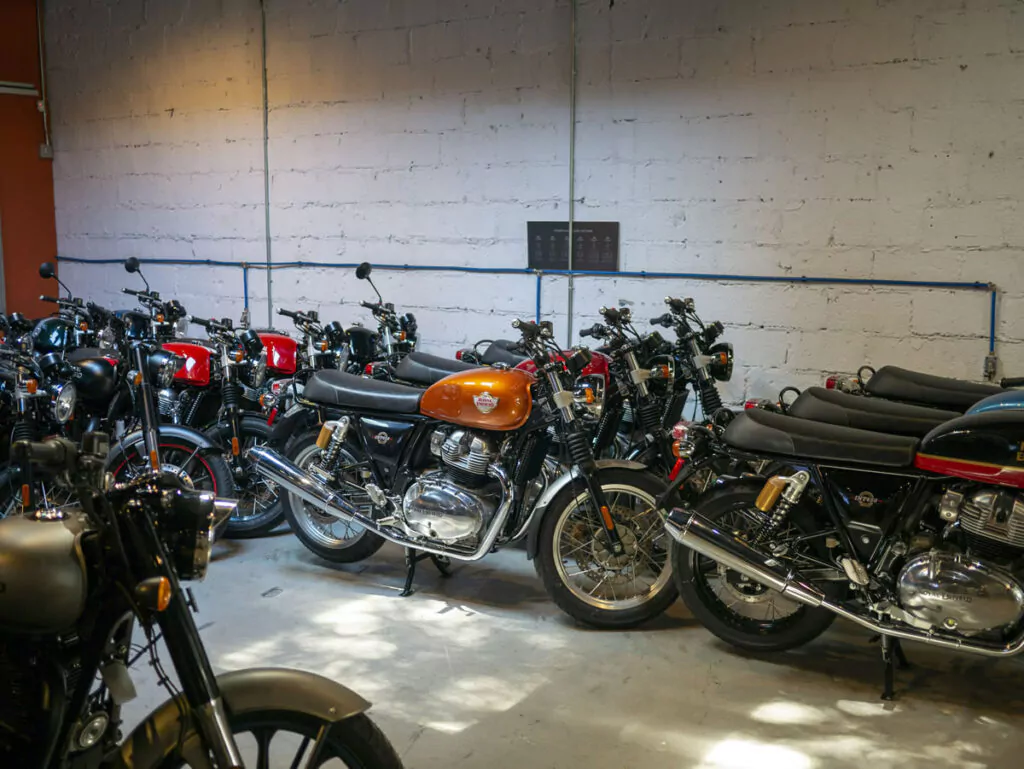
Will the Interceptor 650 still be as good as new in 5 years?
What I’ll nitpick about this motorcycle is about it’s longevity. In the past, Royal Enfield has said time and again that they’ve caught up to the other manufacturers. Their motorcycles have been appealing brand new, but haven’t seemed to be able to hold up to the test of time and use very well. A great motorcycle isn’t a motorcycle that’s great when it’s brand new, a great motorcycle is a motorcycle that still as good as new after five years of ownership. Like a well maintained Japanese machine functioning as reliably as the day you bought it, 40,000 miles later.
Royal Enfield salespeople and fanboys alike will tell you it will last 5 years trouble free. But they can say that with as much integrity as a naysayer can say that it won’t. Neither has any evidence as the model has only been out for three years, and people were locked in their homes for most of them.
What do you get with the Interceptor, besides a three year warranty and questionable roadside assistance?
For starters, a center stand comes standard, and it might not sound like much, but once you’ve had one, you’ll never want to go back to not having one. Your odometer will let you know the total mileage, along with two separate trip meters, and that’s it. You won’t see fuel economy or range or anything of that sort. That’s perfectly alright. My 13 year old Triumph doesn’t have any of that either, although the newer Street Twins and T100 do. My 13 year old Triumph also comes with adjustable levers, which the Interceptor does not.
The Interceptor is air cooled, and at slow but steady speeds I’m happy to not be noticing any significant heat coming from the motor. Fork gators come standard to add to the old school feel, so you’ll never have to look at how badly your fork seals have failed.
What you’re getting is a simple, beginner-friendly, retro looking, fuel-injected motorcycle. It’s no frills and well suited for beginner to intermediate level. It’s the alternative for those who might want to start on a Suzuki TU250X, or Yamaha SR400 or SR500 and upgrade to a Bonneville later. Personally, I think those who have already been riding for years would relegate it to an inner city commuter and look for something with more performance and more premium components to get their hearts really excited.
But don’t they sell zillions of these in India?
They certainly do. And many will claim that the Royal Enfield must be a reliable motorcycle if that’s the case. These people also won’t mention the tariffs added on imported vehicles in India, and that being a domestic vehicle, Royal Enfield’s Interceptor 650 isn’t subject to these.
People also won’t mention that the average annual income in India is less than an American college student makes for a few months of minimum wage work at a summer job. The Interceptor 650 certainly is the motorcycle of a huge number of people, but they don’t necessarily have the buying power and access to a wider range of options, the way you or I might have.
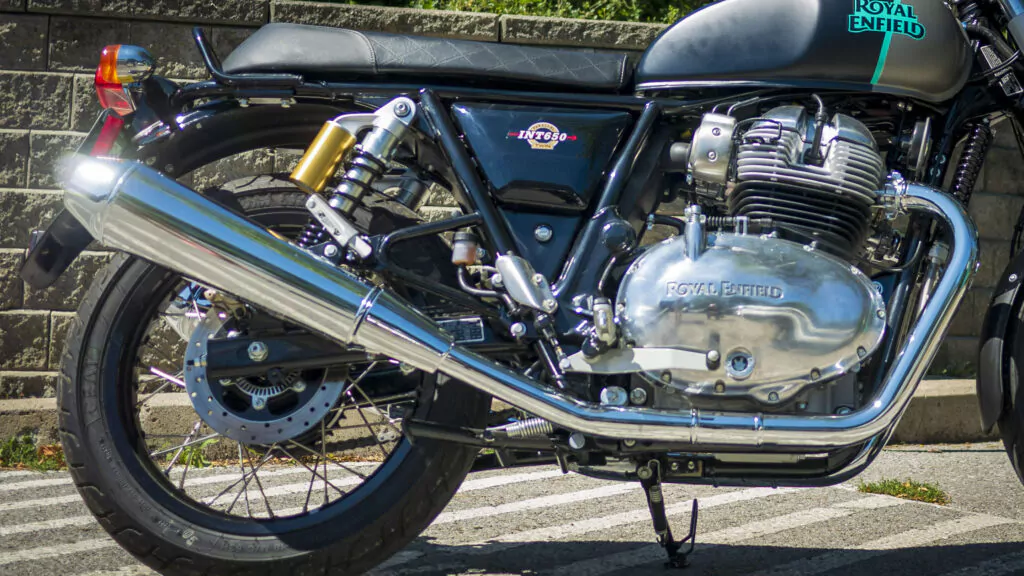
Why are there so many different colors going on?
The Royal Enfield Interceptor 650 has entirely too many different colors, textures, and materials happening at once. This is very likely to keep costs as low as possible, but it makes things look very cheap.
There are a bunch of exposed wires around the motor, but more importantly, the motor itself, and the components around it, seem to have been picked completely at random. You have a chrome exhaust pipe surrounding polished side cover casings, which are attached to a grey motor, which is attached to black cylinder jugs, which is attached to more grey metal, which is attached to polished headers. Why does the motor have to be so many different colors? Because it’s cheap. The thing is, if I’m going to spend thousands of dollars on a motorcycle, I’d like it to at least have a cohesive-looking, not hodgepodge looking motor. Wouldn’t you?
As we continue our look up, we see a gas tank that’s black, and green, and grey, and the paint feels soft and gummy. I’m not reassured of the quality.
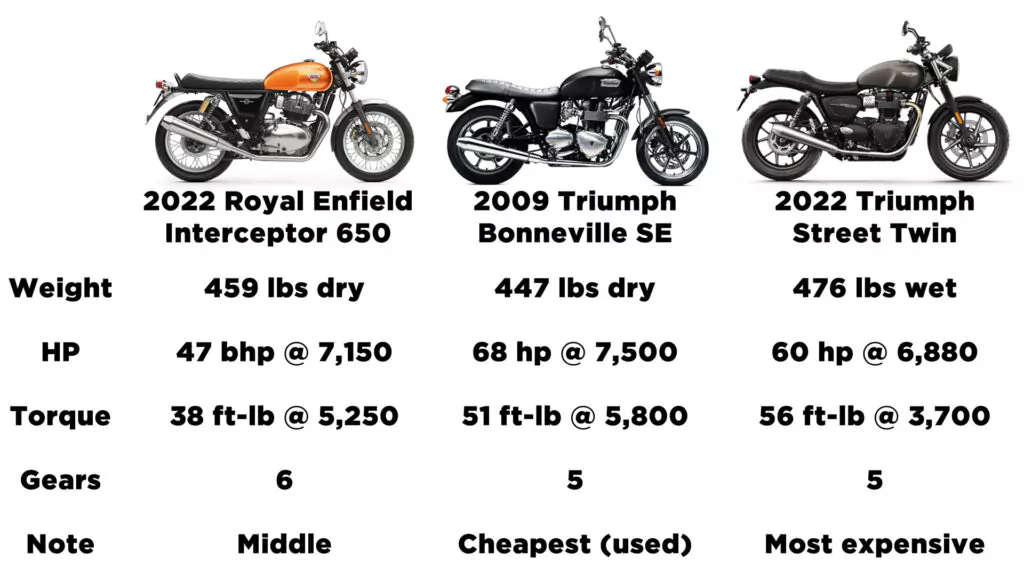
Final thoughts on the Royal Enfield Interceptor 650?
It’s not a Street Twin or even a T100. It’s heavier than it needs to be. It has the same dry weight as my 13 year old Triumph Bonneville SE, but makes about half the power. A bike this slow and aimed at beginners should be lighter weight, but that would involve using higher quality components, and that’s not what this motorcycle is about. This motorcycle is about giving a certain feeling cheaply, to make motorcycling accessible to more riders. That’s not a bad thing, it’s a good thing. It’s just very important to be very clear on the shortcomings, so that you know what you’re getting, or not getting, for your money.
For a beginner to intermediate motorcyclist, the Royal Enfield Interceptor 650 will be fine.
For the intermediate to advanced motorcyclist, you might find it dull, boring, plain, and completely lacking of any particular character set that makes it easy to talk about passionately relative to any other motorcycle you’ve owned over the years. To some, that’s all they’d like, and for them, it’s good enough.
The Royal Enfield Interceptor 650 is fine. It’s everything it needs to be, and nothing more.
And what else?
I had a lot of negative feedback to this review from some absurd Royal Enfield fanboys. One of these guys were so fanatic he went on to send me a death threat if I didn’t say nice things about his motorcycle. You can read about that here.
 YouMotorcycle Motorcycle Blog – Motorcycle Lifestyle Blog, MotoVlog, Motorcycle Reviews, News, & How-Tos
YouMotorcycle Motorcycle Blog – Motorcycle Lifestyle Blog, MotoVlog, Motorcycle Reviews, News, & How-Tos
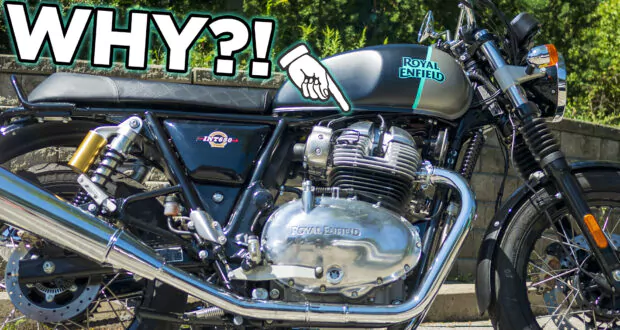
A good motorcycle is a motorcycle that is just as good as a new one, even when it’s five years old. …Holy Words:), good article
Thank you!